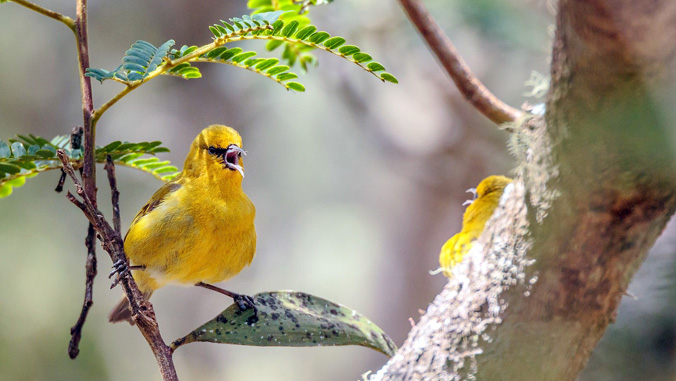
Hawaiʻi has lost 68% of its bird species. A bioacoustics laboratory at the University of Hawaiʻi at Hilo that specializes in the ecology and conservation of Native Hawaiian forests and birds is co-sponsoring a competition to help develop song detection algorithms for Hawaiian birds. The Hart Lab, which is also known as the Listening Observatory for Hawaiian Ecosystems (LOHE) Laboratory, is on a mission to improve techniques for monitoring the distribution and abundance of endemic birds in Hawaiʻi.
“Currently, we have the ability to place automated recorders in our forests to record the birds for long periods of time, but analyzing the recordings must be done manually and is incredibly slow,” said Patrick Hart, a biology professor at UH Hilo who founded LOHE. “Through the development of song detection algorithms, we can automate this process and speed up the analysis process by orders of magnitude.”
$10K for winning code
A $10,000 prize is up for grabs in the BirdCLEF2022 competition project, which tasks participants to develop a model that can process continuous audio data and acoustically recognize the species. UH Hilo alumna Amanda Navine, in collaboration with the Cornell Lab of Ornithology and Google Bioacoustic Group, heads the public coding competition calling for birdsong classification models. It has been launched on the platform, Kaggle, to attract the brightest computer coders from around the world to address the Hawaiian bird extinction crisis.
“I have been working on a project using machine learning to develop an automated bird song detection and classification software called BirdNET,” Navine said. “What a useful tool this could be for advancing endangered species monitoring and research efforts.”
Navine graduated last fall from the tropical conservation biology and environmental science graduate program and now works as an acoustic bioinformatics specialist at the LOHE Lab. She hopes to incorporate promising elements from submitted models to improve BirdNET software.
The competition is an annual exercise to help collect data. The group has collected soundscape recordings and expert labels for 10 Hawaiian bird species, and Navine prepared a notebook that introduces each of the birds to competitors so they can see what is needed to compete.
The project is based on the concept of open sourcing, and participants must ensure the external data used is publicly available and equally accessible to use by all participants of the competition.
For more information go to UH Hilo Stories.
—By Susan Enright

